The word “peripheral” is generally used to describe some kind of accessory a user interacts with directly; whether it be a mouse, some new keyboard, or even a state-of-the-art headset. To a select few, however, peripheral devices (whether focused on gaming or otherwise) also extend to the overall experience of being at the computer. These devices go beyond what it means to “put on a headset and have some fun”. One such device is the Razer Leviathan V2 soundbar, a compact yet powerful THX-powered speaker that sounds exceptional whilst also being easy on the eyes.
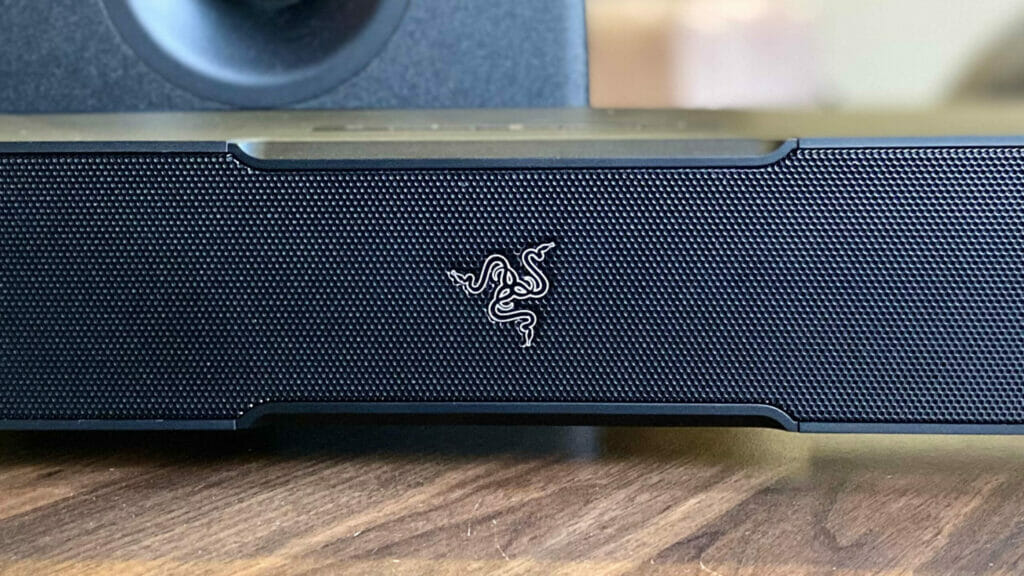
“Designed for gamers” has always been the Razer mantra. While the term has been thrown around a lot in recent memory, it seldom means what the saying implies – at least with respect to other manufacturers. Fortunately, the green ‘snek’ company has not yet lost their way, as the Razer Leviathan V2 fits neatly into gaming setups with a sleek matte black chassis, liberal GB lightbar, and set of stealthed tweeters coupled with a powerful subwoofer below the desk.
Releasing a whopping eight years after its predecessor, and showing just how challenging it can be to improve on innovation, the Razer Leviathan V2 tends to overshadow most competition in this, admittedly, small space. This is thanks in large part to its great performance to cost ratio, which is just under $190 AUD / R3,000 ZAR. The Razer Leviathan V2 offers a 2.1-channel audio experience – just like its previous iteration – but now has a brand-new Razer Chroma RGB striplight and further improvements to the already-exceptional drivers inside the speaker. In all honesty, there is no looking back once this product has been experienced.
Out of the box, prospective users will be pleased to see a tightly packed [environmentally friendly] cardboard box housing the soundbar, and its subwoofer. All required cables are also included, making the setup process all the more easy. The peripheral is quite a sturdy thing, with a hard plastic chassis featuring chamfered edges, a sleek and modern design with Razer logo and THX certification stamped on the front, as well as the usual array of media controls on the top. The Razer Chroma lightstrip stealthily sits below the soundbar, enabling the device to cast a soft yet striking aura onto any desk or table it rests on. The back of the device is a bit more industrial by comparison, with thick Razer cabling sticking out the back. The box also includes a pair of rubber and plastic feet allowing users to change up the angle and height of the soundbar to best suit their needs.
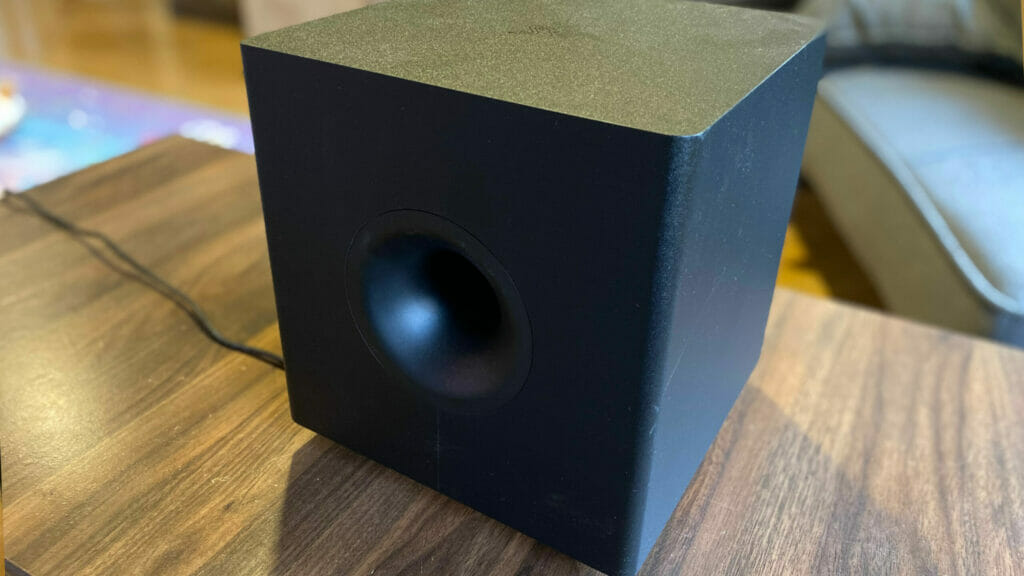
While the soundbar is a neat addition to any computer setup, it needs to be said how understated its accompanying subwoofer is in comparison. While just as well built as its speaker counterpart, there is no RGB to speak of, and the only hint at branding is a tiny Razer logo emblazoned on its topside. Thankfully, it does not take up a lot of space, and will fit into most setups when placed under the table or desk.
Nondescript subwoofer aside, it is clear the company means business when upgrading their peripherals. The soundbar still retains the same pair of .75-inch tweeters, but gets an additional pair of two-by-four inch drivers, as well as a pair of 1,7-inch downward firing bass radiators on the back. The subwoofer, on the other hand, now features a 5.5-inch downward firing driver. All drivers, with the exception of the bass radiators and subwoofer, fire forward at slightly differing angles, towards a centre-point in front of the soundbar which can be tweaked inside the THQ Spatial software on PC.
With that said, the Razer Leviathan V2 connects primarily over a USB connection to the user’s PC, but also features Bluetooth 5.2 connectivity with SBC and AAC codec support. Unfortunately, there is no optical SPDIF connection, and the lack of a 3.5mm analogue connection is quite a shock to get over at first — especially so considering the previous iteration of the soundbar included it.
As is common with Razer hardware, if it connects to a PC it most likely features Razer Synapse support, and the Razer Leviathan V2 is no different. Connecting the soundbar to a PC and installing Synapse will unlock a bevy of customisation options. Moreover, installing the THX Spatial Audio module for Synapse will truly unlock the soundbar’s potential. Users can toggle between THX Stereo and Spatial modes, as well as configure multiple different equaliser profiles based on ten frequency bands, and even adjust the device’s lighting, including synching it to any other Razer Chroma devices a user may have at their disposal.
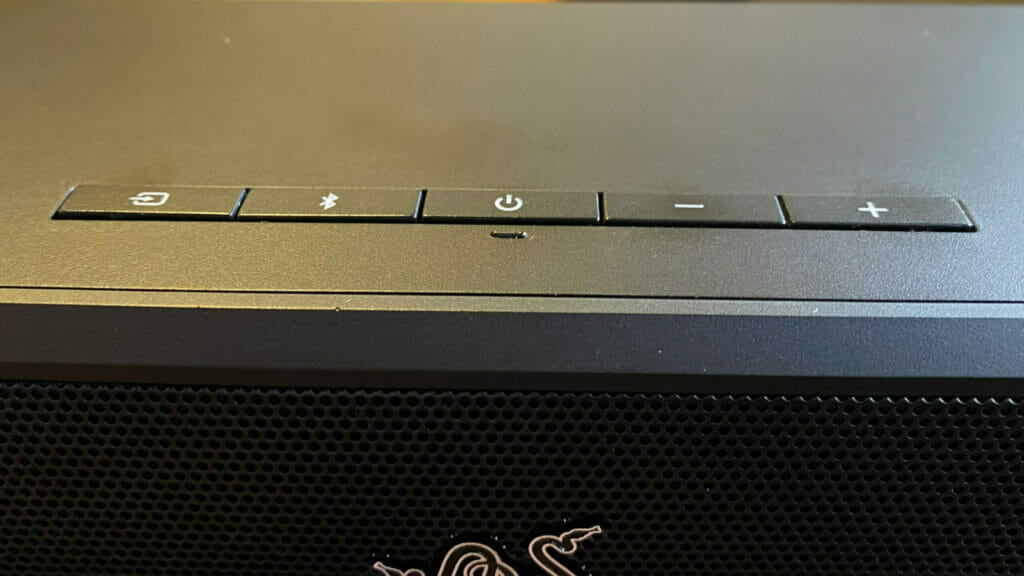
To the mainstream user, a serviceable speaker is more than enough reason for it to stay connected. Gamers, on the other hand, tend to forego the use of speakers entirely and rely solely on headsets or headphones instead (arguably more immersive). This is where the Razer Leviathan V2 aims its user acquisition: it acts as a speaker system fancy enough for the layman, but comes with the looks and features an enthusiast gamer wants. Fortunately, it delivers with aplomb, as it offers solid lows and surprisingly good highs with a neat display of mids. Vocals stretch far and wide with the THX Spatial tweaks, while rock riffs and even electronic beats sound crisp and clear regardless of the associated treble.
As with any soundbar, whether Dolby Atmos enabled or otherwise, gaming should primarily be kept to a singleplayer focus, since relying on any kind of virtualisation from a single soundbar (or speaker) will result in iffy results at best. Spatial audio and mixing can only do so much at the end of the day, and imaging from what is essentially a stereo device will never trump a good headphone with an open soundstage. With that said, gaming remains a treat. Uncharted Legacy of Thieves sounds as epic as its name implies, while the marriage between good audio drivers, great studio mixing (ala. THX), and sound design from the studios of Horizon: Zero Dawn and even Cyberpunk 2077 manage to immerse players fully in their respective worlds. However, when it comes to stellar sound engineering, nothing beats Subnautica. Every single ambient sound from the leviathan class monstrosities lurking in the depths, through to the peepers swooshing about and the rock grubs crawling through the caverns, are distinct and unique. Exploring the mushroom caverns feel as claustrophobic as its denizens make it out to be, while peering off the Edge of the Crater remains ominous and scary through the Razer Leviathan V2.
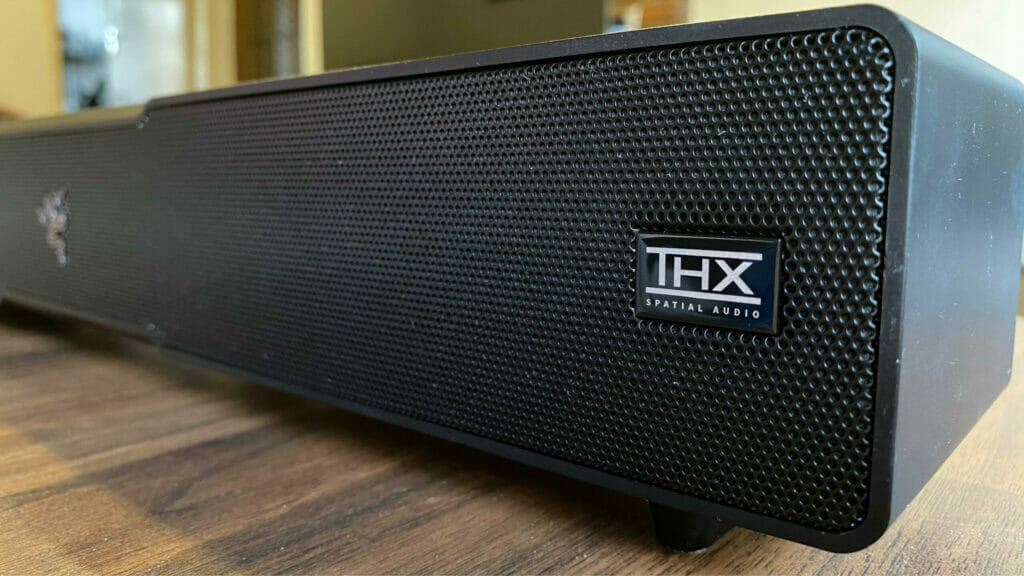
The Razer Leviathan V2 soundbar stands out as an exceptional peripheral device enhancing the overall computer experience for both gamers and general users. With its sleek design, THX-powered speakers, and affordable price point, it surpasses its competitors and offers a great performance-to-cost ratio. The soundbar is well-built and comes with convenient features such as the Razer Chroma RGB lightstrip, making it visually appealing and suitable for any gaming setup. Additionally, the inclusion of Razer Synapse support allows for extensive customization options, including THX Spatial Audio settings and equaliser profiles. While the lack of certain connectivity options may disappoint some users, the USB and Bluetooth connectivity provide sufficient options for most setups.
Overall, the soundbar impresses with its audio quality, delivering solid lows, clear highs, and an excellent display of mids. The Razer Leviathan V2 proves to be a versatile and reliable peripheral going beyond mere accessory status. It caters to the needs of both casual users and enthusiastic gamers, combining sleek design, powerful sound output, and customizable features. With its exceptional performance and reasonable price, the Razer Leviathan V2 is a standout option for anyone looking to elevate their computer audio experience.
Verdict:
EXCEPTIONAL
| PROS | CONS |
| Exceptional audio quality | No 3.5mm or optical connectivity |
| Modern and sleek design | Subwoofer looks basic |
| Fits almost any setup |
Device temporarily provided for review by Razer.
Review Methodology | Ethics Policy
Junior Editor at Vamers. From Superman to Ironman; Bill Rizer to Sam Fisher and everything in-between, Edward loves it all. He is a Bachelor of Arts student and English Major specialising in Language and Literature. He is an avid writer and casual social networker with a flare for all things tech related.

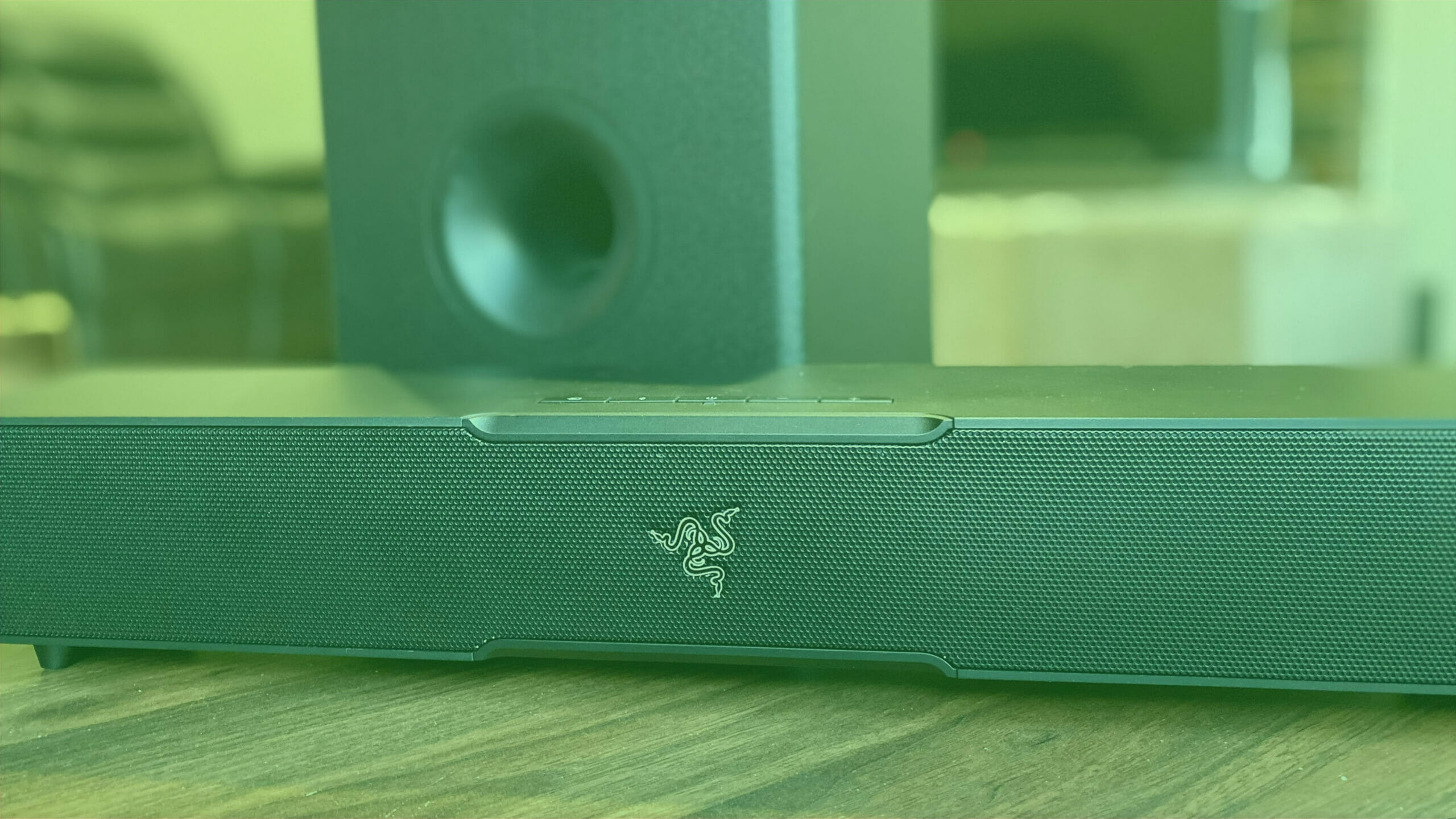




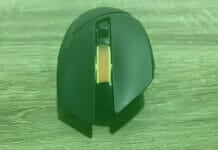









![Razer Kraken V3 Pro Review – Welcome to Boomtown [Redux]](https://vamers.com/wp-content/uploads/2022/07/Vamers-Technology-Razer-Kraken-V3-Pro-Review-Banner-218x150.jpg)





